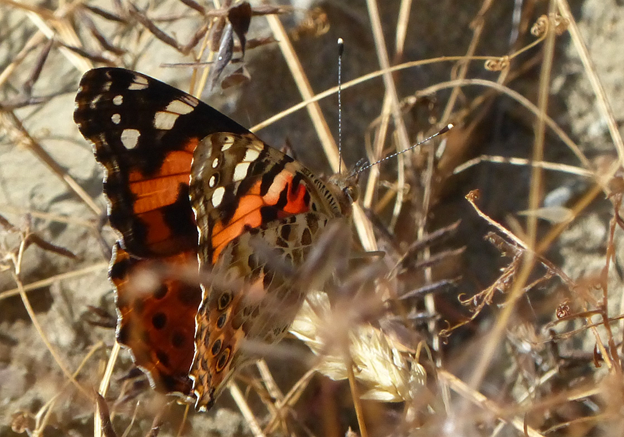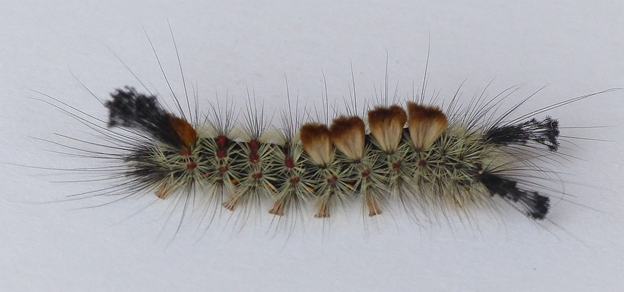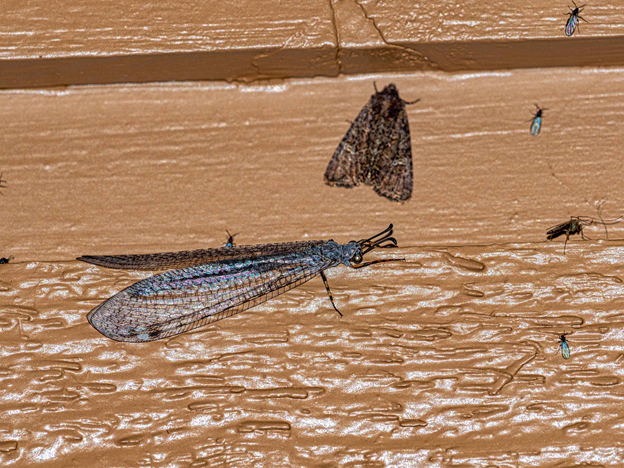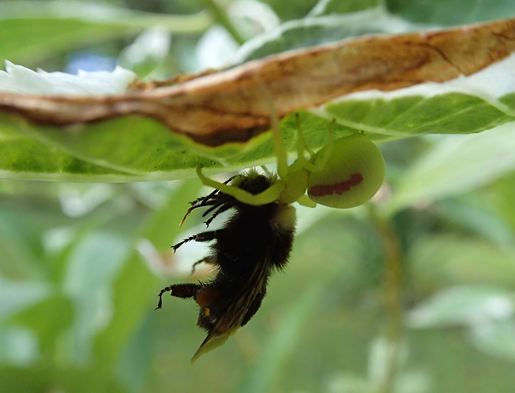August 7
2020 August 7
Jochen Möhr reports from Metchosin:
This morning:
2 Neoalcis californiaria
1 Perizoma curvilinea
Yesterday afternoon:
2 Ochlodes sylvanoides
1 Vanessa cardui


Painted Lady Vanessa cardui (Lep.: Nymphalidae) Jochen Möhr
And this afternoon, a fine caterpillar:


Orgyia pseudotsugata (Lep.: Erebidae – Lymantriinae) Jochen Möhr
And here’s a nice miscellany from Gordon Hart in the Highlands. The centre-stage insect is an antlion. Don’t know the exact species. Don’t think we can identify the noctuid moth, which is just a little out of the depth of focus. The small insect nearest the right hand edge of the photograph is, I think, a culicid, better known to most of us as a mosquito. Never thought we’d find out what the other small flies are, but Libby Avis identified them! They are dark-winged fungus gnats (Dip.: Sciaridae). We can even make out the wing venation on one of them.


Antlion (Neu.: Myrmeleontidae) and others Gordon Hart
Crab spiders seem to be able to capture and subdue some quite large prey. Yesterday Rosemary Jorna saw two of them, each with a large bumble bee, in her garden in the Kemp Lake area.


Misumena vatia (Ara.: Thomisidae) with Bombus vosnesenskii (Hym.: Apidae) Rosemary Jorna
Random thoughts (Jeremy Tatum):
How do you spell fishfly, bumble bee, etc.?
I think the rule that I’ll follow on Invert Alert is this. If it is a fly, then “fly” is a separate word. If it is not a fly, “fly” is attached.
Thus House Fly Butterfly
Drone Fly Dragonfly
Horse Fly Stonefly
Hover Fly Fishfly
Dung Fly Caddisfly
etc., usw. By this rule, I suppose it should be Bumble Bee
Talking of stoneflies, we’ve had only three photographs of them in the ten years of Invert Alert. There are usually lots at Goldstream Park. Photographers please note.
In the days of Moses Harris (1730-88), the word “fly” was used for any insect, in much the same way as today some people misuse the word “bug” to mean any insect. Thus Moses Harris wrote that “The Camberwell Beauty is one of the scarcest Flies in England.”
